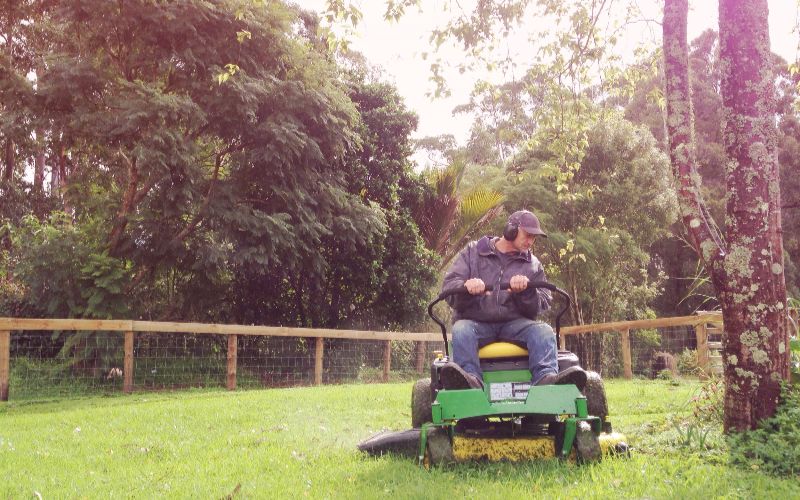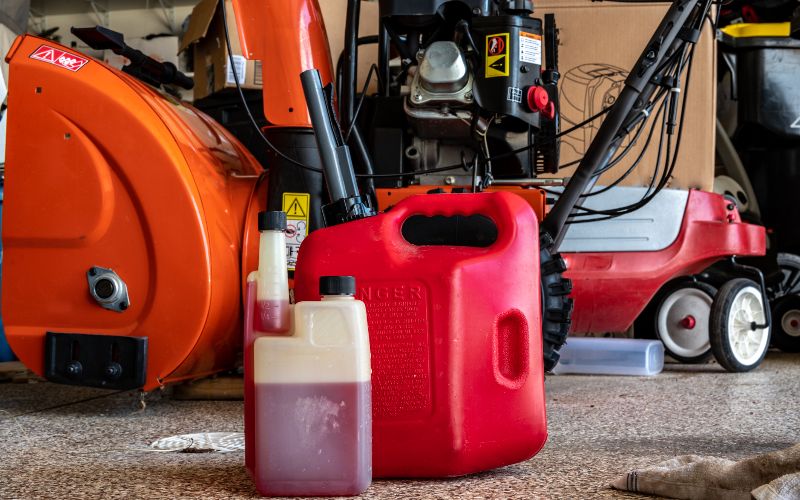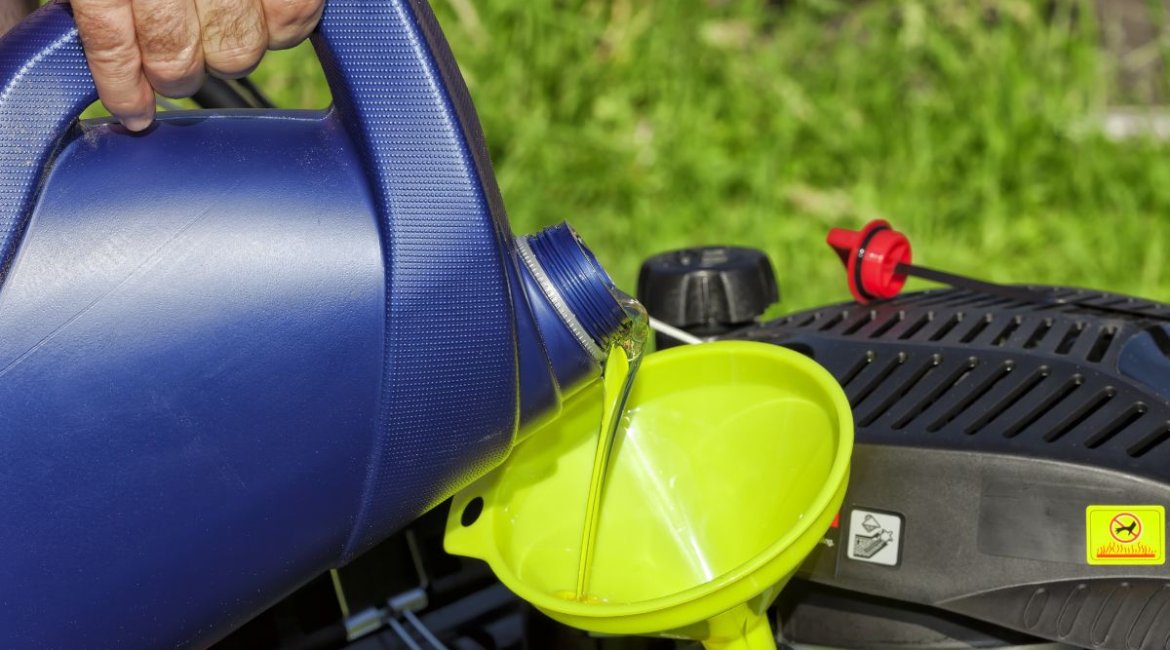A ride on mower is one of the most practical machines one can own. After the lengthy process to determine which mower is best for you – routine maintenance of this handy machine is crucial? Modern ride on mowers offer comfort, ease of use and accessibility. How do we maintain these convenient machines?
In this article, we will discuss DIY troubleshooting for common issues users might face. We will cover engine troubles, blade problems and electrical faults your mower might have. Lastly, we will discuss the importance of safety features in the mower and why it is essential to routinely maintain those mechanisms.
Diagnosing and Fixing Engine Problems In Your Mower
A ride on mower is a powerful tool to maintain landscapes. The mower should be maintained for smooth operation. The maintenance of the mower includes replacing stale fuel, faulty spark plugs, batteries, clogged carburettors and more.
By performing the necessary maintenance, users can prevent overheating their mower engine and extend the mower’s lifespan. We will explore the common problems and possible solutions users might face.
Mower Won’t Start: Common Causes and Solutions
There are a few easy checks users can do to identify why their ride on mower won’t start. Firstly, users should check the fuel tank for stale or old fuel. It is important to use fresh gas for optimal performance. Fuel will degrade over time and can form a sticky deposit which leads to fuel lines getting clogged.
Secondly, users should look at the oil filter. The oil filter removes contaminants and debris. The filter should be cleaned or replaced when clogged. The spark plug is responsible for starting the engine. Spark plugs that misfire and are worn, or are dirty, will prevent the engine from starting. Inspect and replace the spark plug when necessary.
Thirdly, users should inspect the batter charge and connections if the mower uses an electric starter. Loose wires and low battery charge can be the reason why your mower won’t start. Examine the carburettor to ensure smooth operation. Cleaning and maintaining the carburator will prevent restricted airflow and engine stalling. Always use your ride on mower user manual to guide you when doing routine checks.
Engine Starts But Runs Roughly Or Dies Quickly
The mower’s engine starts but dies quickly thereafter. Usually this is a sign of a clogged carburator, dirty fuel or a damaged flywheel key. Cleaning the carburator is a process that takes time. It needs to be removed from the engine, disassembled, cleaned, reassembled and reinstalled. Some individuals prefer to replace the carburator instead of cleaning.
Users should inspect the flywheel. Ensure there is no damage and that the keyway and flywheel are aligned. Check closely for indentations and bends. If the key wobbles when placed in the keyway, it needs to be replaced.
Engine Overheating or Smoking Issues
There can be a few reasons for overheating. Low oil is by far the most common reason. Check the mower’s oil level and top up if low or empty. Clogged cooling fins can cause overheating. Clean the cooling fins from dust, debris or any contaminants restricting airflow. Hard water or mineral deposits can build up in the radiator and restrict airflow.
Make sure you are using the correct coolant and replacing regularly. Air filters that are dirty restrict airflow and prevent proper cooling. Ensure the air filter is clean. Clean or replace the air filter if needed. If the mower is still overheating, consult a professional for further advice.

Troubleshooting Blade and Cutting Problems on Your Mower
Users can achieve well trimmed lawns by maintaining their mower. Issues like uneven cutting, loss of power and poor grass discharge can prevent optimal performance and results. These problems can stem from simple causes like dull blades and improper deck heights.
By understanding these problems and their solutions, users can keep their mower running efficiently while avoiding costly repairs. Simple problems like a worn drive belt or clogged discharge chutes can lead to uneven grass cutting and the engine overheating. Luckily most of these can easily be repaired or fixed with routine checks and maintenance.
Uneven or Poor Grass Cutting: Causes and Fixes
Uneven grass cutting can be caused by dull and damaged blades. Inspect your mower blades for dullness and damage and sharpen the blades safely. The instructor’s manual will indicate how you can sharpen the blades while taking safety precautions. Check and adjust the cutting deck height and level.
If the cutting deck is set too high for the length of the grass, it will fail to reach and cut the lawn. If the deck height is too low it will rip the grass from the soil and can damage the blades. Remove the grass build-up under the deck to improve cutting quality. Remember to only do this once the mower has been switched off and cooled down.
Mower Not Moving Or Losing Power
If your mower starts but fails to move, it might be a sign of a worn or broken drive belt. You can do a visual inspection and access if the belt indicates damage. A worn and damage belt has cracks, has a shiny appearance and is frying. If these indicators are present it might be time to replace the drive belt.
When replacing the drive belt, always remove the spark plug to prevent the engine from starting. Remove the belt and carefully assess for wear. Check for tension and adjust if necessary. Furthermore, owners can check and adjust tire pressure. If the mower is still failing to move, you might require a professional to inspect the mower for mechanical issues.
Grass Clippings Not Discharging Properly
Sometimes the mower will struggle to discharge clippings. This can be caused by a clogged discharge chute. Avoid cutting grass when wet as it more likely will clog the chute. The discharge chute should be clean routinely.
Cleaning the underside of the mower deck prevents the blades from getting caught in debris. Dull blades can also be the cause of grass clippings not discharging properly. Ensure the blades are sharp enough for a clean and even cut. Mowing at the correct speed can help grass clippings discharge with ease.
Electrical and Safety Issues: What To Check And How To Fix Them
The ride on mower’s electrical system and safety features are crucial for reliable operation and preventative injury. When a mower fails to start or struggles with electrical issues, it is important to identify the root of the cause. Fixing electrical and safety mechanisms on a ride on mower is essential for performance and the safety of the user.
By understanding the common electrical system failures and safety malfunctions, users can take the appropriate steps to keep their mower running. Prompt attention to electrical concerns will ensure the mower remains safe and reliable for use.
Electrical System Troubleshooting
Users can check their mower battery health and charging system in electric start mowers. A multimeter can be used to test battery voltage. Inspecting wiring connections for corrosion and damage can help users identify electrical issues. The grounding and positive connections should be secured.
Users can test safety switches such as the seat switch and blade engagement switch. Resetting blown fuses can solve the electrical issue mowers may have. Users should inspect the mower fuse box and test the fuse for continuity. If there are still issues starting the mower, the alternator should be tested to see if it produces power.
Starter Problems: Pull Cord And Electric Starter Fixes
There are some common issues users can experience with their mower starter. Common pull cord starter issues include rope knots and recoil spring problems. A knotted rope can be challenging to pull and it can cause the recoil spring to fail. A damaged recoil spring will fail to wind up the rope properly.
Consider replacing the rope and recoil spring if you experience this issue. The next potential issue could stem from the battery. Verify the battery voltage by using a multimeter. If the battery voltage is under 12 volts, recharge the battery. If the battery does no longer charge, consider replacing the battery.
Thirdly, users should consider testing the solenoid. There are a few methods of testing the solenoid. Start by checking the voltage. Listen to the sound it makes when you turn the key in the ignition. Users should hear a clicking sound. If there is a click sound but the motor does not ignite, the solenoid should be replaced.
Safety Features Not Working Properly
The safety features on modern ride on mowers are a preventative measure for the safe and secure use of the machine while in operation. These machines are powerful and can cause injury. Manufacturers are constantly inventing new systems to keep users safe during the operation of a ride on mower.
These safety features include the seat safety switch and clutch safety mechanisms. The seat safety switch is a safety mechanism that ensures the engine shuts off if the operator is not seated. This safety switch prevents accidental injury. The switch can be tested through the user starting the motor while seated and then starting the motor without sitting in the seat.
The absence of the user’s weight should prevent the motor from engaging and starting. Observe the operation of the mower. If the switch fails, replace the safety switch mechanism. Seek professional help for complex safety repairs.

BS Power: Keep Your Ride On Mower Running Smoothly
Maintaining your ride on mower doesn’t have to be complicated – with the correct knowledge and regular care, you can prevent common issues and extend the lifespan of the machine. By following the information in this article, you’ve learned how to troubleshoot some of the most common issues.
Users should remain proactive with maintenance as this will save them time and money in the long run. Always prioritise safety by consulting your owner’s manual and wearing protective gear when performing repairs. If the problem seems too complex, seek professional help.
At BS Power, we’re committed to helping you keep your ride on mower running smoothly. Users can explore our high quality ride on mower parts, accessories and expert support to ensure your mower stays in optimal condition.






